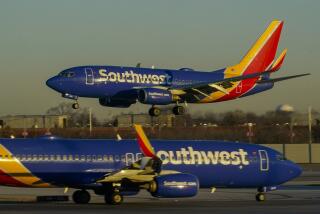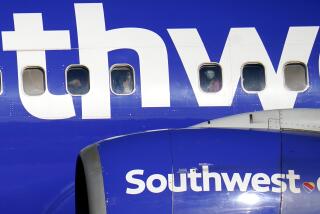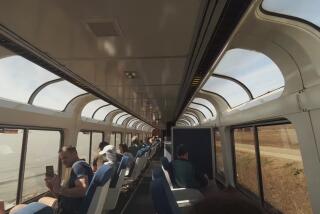Snag the best seat on the plane
WHEN you fly far enough or frequently enough, where you sit on the plane can become an obsession.
I know. I’ve taken more than 60 international flights since 1999 and wasted hundreds of hours in airports and on airplanes. That’s not exactly time well spent, but it has made me realize that seat selection is one thing an economy-class passenger can control. It can mean the difference between a pleasant experience and a nightmare, especially now that flights are at or near capacity.
Nothing beats first or business class, of course. But if you are stuck in economy, you do have options.
As any frequent flier can tell you, not every economy seat is the same, and some are definitely better than others. The key to finding the best seat is to know what you want, what’s available and how to get it.
Here is what I’ve learned:
Reserve a seat when you buy your ticket. If you show up at the airport without a seat assignment, you may get stuck sitting in a place no one else wants -- or worse, not getting on the plane at all.
“Travelers are becoming quite savvy in selecting seats in advance,” said Randy Raphael of Vision 2000, a large Canadian travel agency with headquarters in Toronto. “If the flight is overbooked, and you don’t have a seat assignment, you are the one likely to be left behind. It is always a good idea to book any seat.”
Many international carriers have online or even text messaging check-in services up to 48 hours before a flight, which gives passengers, especially frequent-flier members, the chance to see what is available and make a choice.
Don’t choose a seat based on safety concerns. Popular wisdom holds that the rear of an aircraft is safer because planes tend to crash nose-first or that the extra structural support of the wings protect seats in that section.
“Often, survival is not a question of where one sits, but how quickly one gets out of the aircraft,” said Todd Curtis, president of AirSafe.com, a Washington-based nonprofit that provides information on airline safety.
“In an emergency, knowing where the exits are and following the directions of the flight and cabin crew are the two best things a passenger can do to ensure survival.”
Think about your seating choice in terms of comfort. I am happiest when I am in an aisle seat near the middle of the plane, where the thrumming engines help me sleep. But what works for me might not work for you.
Knowing what to choose and what to avoid is all about having the right information. Websites such as www.SeatGuru.com, www.SeatExpert.com and www.LoveMySeat.com offer seating information and recommendations for dozens of domestic and international airlines.
“Seat comfort is often listed as the top priority or concern for travelers,” said Steven Hall, founder of LoveMySeat.com. “Avoiding a bad seat is worth the five minutes it would take to do some simple research.”
Interactive maps on these websites assess individual seats by their level of recline, legroom, row position, access to in-flight amenities and proximity to lavatories and the galley. Recommendations are based on thousands of user comments and industry research.
For those who can afford to choose an airline based on factors other than price, the websites also rate carriers on seat width and pitch, which is the distance between rows. These can vary among aircraft and airlines by several inches.
The search for the most comfortable seat is about trying to find an extra bit of space.
“Almost without exception, when a passenger says, ‘I would like that seat....’ we can finish the sentence for them,” said Michele Travers, a sales consultant for 20 years with the Australian airline Qantas.
“Everyone wants the emergency exit row or a bulkhead row because they usually give passengers more legroom.”
Emergency exit row seats usually can’t be booked in advance because airline staff has to ensure passengers are physically capable of assisting them in an emergency. Many airlines also reserve bulkhead rows for frequent fliers, elderly travelers or families with infants or small children. Some, like Northwest and Air Canada, charge for these seats if you are a non-elite or economy-class flier.
Keep your eyes on the prize. These restrictions, which differ among carriers, don’t mean other passengers can’t get these seats. Sometimes, arriving on time or early at the airport can help. Many airlines open their check-in desks three hours or more before departure, even though passengers usually are advised to arrive only two hours ahead of departure.
These prized spaces can have drawbacks too. Airlines use a variety of aircraft, and sometimes seats in emergency exit and bulkhead rows are cramped, don’t recline or are next to heavy traffic areas near the lavatories or galley. This is where personal choices come in.
“One of the fascinating things we’ve discovered is that everyone has different preferences and opinions of the same seats,” said Matthew Daimler, chief executive and founder of SeatGuru.
“While many users might complain about a seat near the lavatory, there are others who cherish such a seat because they don’t have to wait in a line,” Daimler said. “While most fliers try to avoid middle seats, we do see a fairly even split between those who prefer aisle seats and those who prefer window seats.”
A window seat offers a view for takeoff and landing, and the opportunity to rest your head against the cabin wall. And with no one trying to get past you, there’s the greatest chance of uninterrupted sleep -- although it does mean you’re blocked in.
“Typically in economy class, the most popular seat location for leisure travelers are window seats,” said Hall of LoveMySeat.
But “for business travelers, the most popular are aisle seats,” he said. Aisle seats guarantee access to at least one armrest, with open space to one side and the possibility of stretching your limbs a little more, which is helpful if you want to read the newspaper, work on laptops or have written work to do. They also offer unimpeded access to the aisle and overhead compartments.
The downside? Your elbows and feet can get hit by the drink or food carts and by passengers traipsing past.
The least appealing seat for most fliers is the one in the middle. Imagine it’s a night flight. The row before you has reclined, and the passengers on your left and right, one or both of whom probably is a stranger, are fast asleep and hogging the armrests. Cramped doesn’t begin to describe it.
“If you don’t reserve your seat in advance, it is probable you will end up with a middle seat,” Raphael said. “For long flights, this is the worst seat to have.”
After choosing your window or aisle seat, consider the row. “The front of the plane is usually farther away from the engines and therefore quieter,” Daimler said. “Many times the in-flight beverage and food service begins from the front too, which some fliers find enjoyable.”
Passengers at the front of an aircraft are also the first to get off the plane and into the immigration and customs lines. Although this can be a deciding factor for short-haul or connecting flights, it is debatable how much it helps when landing at busy hubs, such as Hong Kong or London’s Heathrow.
Besides, the front rows are so popular that some airlines reserve them for frequent fliers.
“The rear of the plane is typically least desirable,” Hall said. “It takes much longer to exit and food and beverage service is often last to these seats.” The back also has the traffic of the lavatories and galley.
But that doesn’t deter some passengers, who prefer the back because they are the first to board and get settled in, with their carry-on luggage nearby.
What’s the Holy Grail of economy-class seating? The empty four-seat row. Passengers watch for these open spaces, waiting for the exit doors to close so they can stake their claim.
Those who get to stretch out and relax on a long flight in such comfort never forget their luck.
More to Read
Sign up for The Wild
We’ll help you find the best places to hike, bike and run, as well as the perfect silent spots for meditation and yoga.
You may occasionally receive promotional content from the Los Angeles Times.






